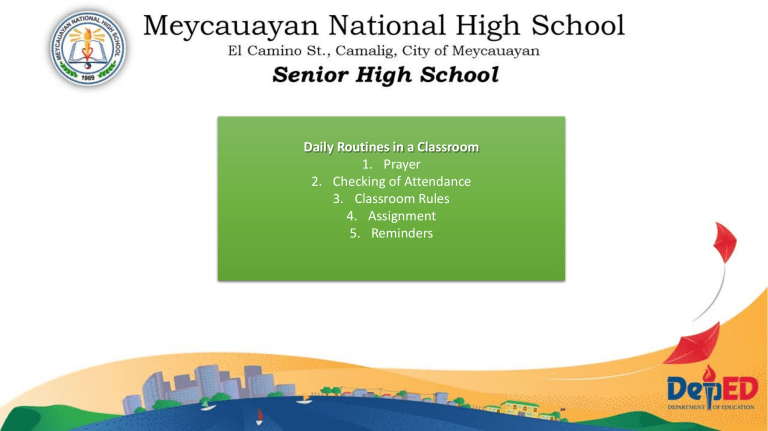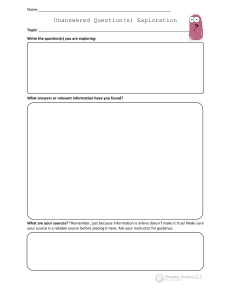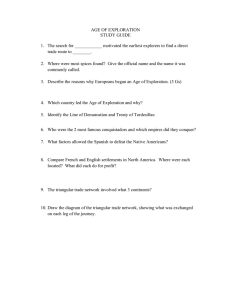
Daily Routines in a Classroom 1. Prayer 2. Checking of Attendance 3. Classroom Rules 4. Assignment 5. Reminders ATTENDANCE September M THURS 7-9am 9-11am 11- HUMSS ARISTOTLE BOYS BLENDED MODALITY M 1 3 T H 1 6 M 2 0 T H 2 3 M 2 7 September M THURS 7-9am 9-11am 11- HUMSS ARISTOTLE T H 3 0 Girls BLENDED MODALITY 1. 1. 2. 2. 3. 3. 4. 4. 5. 5. 6. 6. 7. 7. 8. 8. 9. 9. 10. 10. M 1 3 T H 1 6 M 2 0 T H 2 3 M 2 7 T H 3 0 ATTENDANCE ASSIGNMENT September M THURS 7-9am 9-11am 11- HUMSS ARISTOTLE BOYS BLENDED MODALITY M 1 3 T H 1 6 M 2 0 T H 2 3 M 2 7 September M THURS 7-9am 9-11am 11- HUMSS ARISTOTLE T H 3 0 BOYS BLENDED MODALITY 1. 1. 2. 2. 3. 3. 4. 4. 5. 5. 6. 6. 7. 7. 8. 8. 9. 9. 10. 10. M 1 3 T H 1 6 M 2 0 T H 2 3 M 2 7 T H 3 0 REMINDERS EAPP-Q2 Lesson Number: 1 Understanding Text Structure Jessica B. Bongabong Subject Teacher Introduction You are living in a world where information is just a click of a cursor, and the vast riches of knowledge seem overwhelming for a Senior High School student like you. Being familiar with the various text structures may help you analyze texts more easily. In this module, you are going to understand the different kinds of text structure and its application to you as a student. Lesson Objective At the end of the lesson, the learners must be able to: 1. Define text structures and each type; 2. Determine what type of text structure a sample passage it belong; 3. Appreciate the importance of text structure by creating a paragraph using any of the type. Vocabulary Here are the words that can help you understand the entire module. Definition was derived from the Merriam Webster Dictionary mobile application. 1. Analyze -To study or determine the nature and relationship of the parts of something 2. Cause- Reasons why something happened, something that brings about an effect or a result. 3. Cause and Effect- Type of text structure that explain reasons why something happened or the effects of something. 4. Chronological-Type of text structure where information in a passage is organized by the time in which each event occurred. 5. Comparison- the text only discusses similarities 6. Contrast- The text discusses ways that the things are different. 7. Solution- A remedy for the dilemma or concerning issue in a text. 8. Spatial- Type of text structure when information in a passage is organized in order of space or location. 9. Signal Words- Words that help identify the type of text structure. 10. Text Structure- It refers to how information is organized in a passage or how a piece of text is built. Pre-Test Pre-Test: Directions: Read each question and choose the letter of the correct answer. Write your answer in your data notebook. 1. What do we call how information is organized in a passage? a. Academic Text c. Reading Comprehension b. Academic Writing d. Text Structure 2. Which type of text structure is a pattern of organization where the similarities and differences of two or more things are explored? a. Cause and Effect c. Comparison and Contrast b. Chronological d. Problem and Solution 3. What method of organizing text is generally used for instructions or directions, but it can also be used to explain processes in nature or society, such as how a president is elected? a. Cause and Effect c. Comparison and Contrast b. Chronological d. Sequence Pre-Test Pre-Test: Directions: Read each question and choose the letter of the correct answer. Write your answer in your data notebook. 4. What type of text structure to which information is organized in steps or a process and is explained in the order in which it occurs? a. Cause and Effect c. Comparison and Contrast b. Chronological d. Problem and Solutions 5. Which of the options below explain reasons why something happened or the effect of something? a. Cause and Effect c. Comparison and Contrast b. Chronological d. Problem and Solutions Motivation This activity aims to prepare the learners to the lesson: Motivation This activity aims to prepare the learners to the lesson: Presentation of the Lesson Learning Exploration: Learning Exploration: Learning Exploration: Learning Exploration: Learning Exploration: Learning Exploration: Learning Exploration: Learning Exploration: Learning Exploration: Evaluation: Evaluation: Assessment: Assessment:



